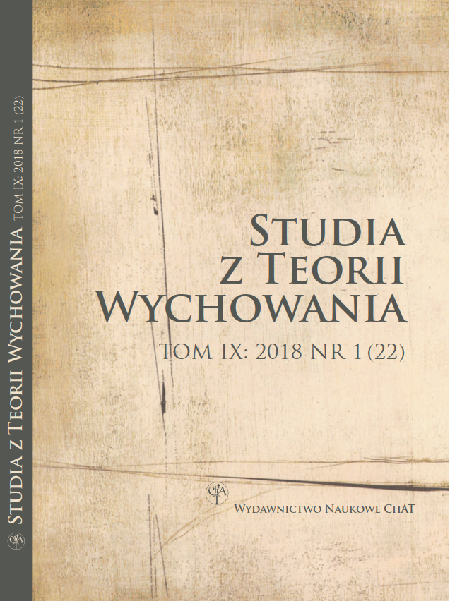Myśląc o życiu duchowym/mentalnym w kontekście aktywności: transformacje bezszelestne versus modyfikacje
Thinking about spiritual/mental life in the context of activity: silent
transformations versus modifications
Author(s): Ewa Marynowicz-HetkaSubject(s): Philosophy, Social Sciences, Education
Published by: Wydawnictwo Naukowe ChAT
Keywords: activity; mental life; silent transformations; modifications
Summary/Abstract: The subject of the article is a reflection on the nature of transformationsoccurring silently in the course of human activity. The structure of theseprocesses is complex, often spirally connected, in the form of a coil or braidtangles and includes both the visible aspects, referred to by François Jullien(2009) as modifications, and those that are invisible on a daily basis, in shorttime, as Ferdinand Braudel calls it (1999). They are discoverable only in thelong term (idem, 1999) and in re-experiencing, which is analyzed by Jullienin his latest work (2017).A characteristic feature of both activity and transformation is theircomplexity, connection and parallelism of occurrence. Their nature can be analyzed (Barbier 2016) both in the context of visible modifications of activity(including lines, activity trends, etc.) and in relation to possible anticipationsof events in the field of practice, giving grounds for attributing new meaningsand senses of the spiritual/mental life.Spiritual life is understood as mental life, embracing activities of thesubject that are aimed at transforming his/her own representations” (Barbier2016, p.116). “Mental” means in this statement “felt inside”, imagined andexpressed discursively.While thinking about spiritual life in terms of mental life understoodin this way, it is particularly important to understand this spirally-built convolutionof activities as transformations of transformations, which is termedas couplage structure (conjugation, structural connection). An example ofsuch a structurally related/structurally conjugated relationship may be there-experiencing of experiences (i.e. re-life, seconde vie), in which we are onlydiscovering the essence and sense of our activity (Jullien 2017).
Journal: Studia z Teorii Wychowania
- Issue Year: IX/2018
- Issue No: 1 (22)
- Page Range: 9-23
- Page Count: 15
- Language: Polish

